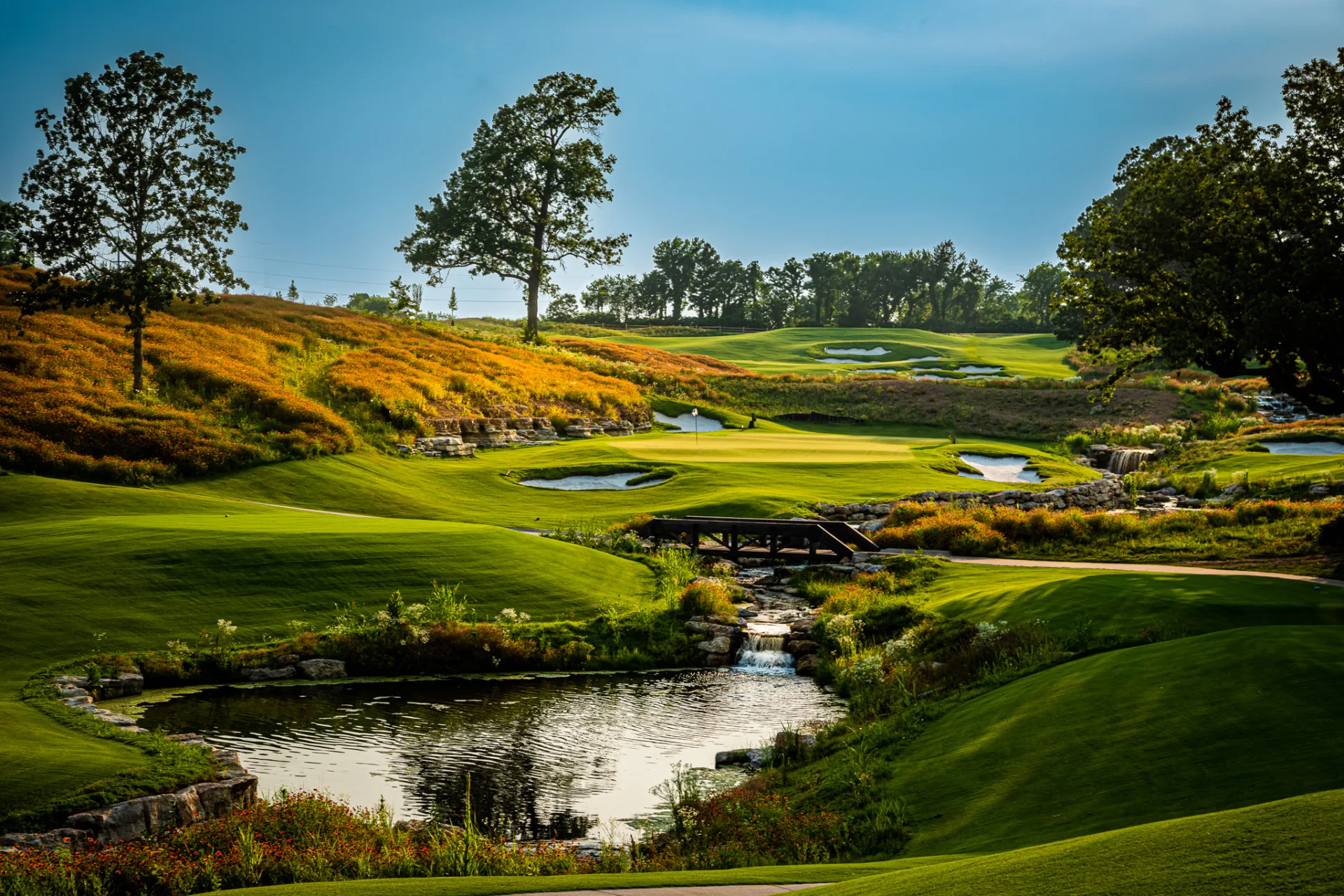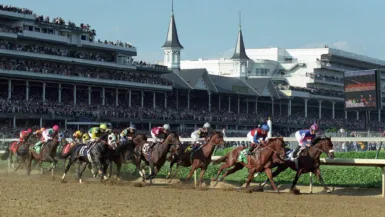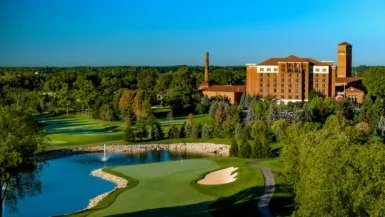The Battlefield Par-3 Course at Shangri-La Resort (Monkey Island, Okla.) is an extraordinary golfing experience on an unforgettable piece of land. The picturesque short course has received rave reviews in its first several months of operation and has transformed the vibrant lakefront destination into a 45-hole golfers paradise.
The visionary who brought The Battlefield’s design to life in such picturesque and dramatic fashion is Tom Clark, the same golf course architect who has brought polish and intrigue to the 27 championship holes at Shangri-La.
Clark is a Pennsylvania native who now lives in Virginia and has designed golf courses all over the globe. With The Battlefield, Clark and Kevin Atkinson created the 3,000-yard, par-54 layout, The Battlefield with more than 100 feet of elevation change. Each hole on The Battlefield is named in honor of an Oklahoma veteran of World War II.
Clark discusses his philosophy for building a short course and the strategy behind building the greens and what he hopes guests take away from playing this unique golfing experience:
Do you think a course like The Battlefield can convince people that there’s just as much thrill to playing shorter courses as there is on a championship course?
Absolutely. I’ve done over a dozen short courses. A lot of them are what you’d call chip-and-putts where you bring three clubs – a putter, a sand wedge and pitching wedge. The Battlefield is entirely different. It’s a championship golf course. It’s a basic combination of a lot of great par 3s. It has a standalone value as far as there are three courses in one – the championship course, then there are several tees for average players and there’s a chip-and-putt tee where you can take three clubs, a couple of balls, and off you go. It was devised that way as an alternative for a lot of the hotel guests and the members.
The Battlefield is built on a dramatic parcel of land. What are you most pleased with when you look at how the routing and the overall experience turned out?
The land has amazing trees that were pretty well spaced out and we managed to keep all of them. The routing was done in such a way, we have great separation of holes even though it’s a relatively tight site for that big of a golf course. We had a lot of elevation change and we incorporated the valley stream into a lot of holes. It’s very attractive. The one decision that was made was to put cart paths on the course. I had never done a par 3 that had cart paths, but I’m very glad we did because of the elevation change and it helps control drainage.
It was a project where we were open to evolving the plan for the betterment of the design and end-use. We expanded a couple of holes – 15 and 16 – across an area we hadn’t used before and created another pond down there. Then we enlarged the practice area also. Then we built the beginning of a ginormous putting course, about 8,000 of an eventual 24,000 square feet that will one day service the stay and play units.
You really took your time with the greens, to make sure they were fun, yet challenging. Can you take us into your process of designing these greens?
It was an interesting way they evolved. They maintained the name The Battlefield … the whole thing had a lot to do with the second World War. We were going to make it look like a World War II battlefield. But that got toned down a little bit. We basically used the railroad ties to simulate a lot of that look in certain places. The greens themselves, I tried to get some similarities to midwestern architecture. You basically want to make them challenging. You have a 230-yard hole, you’re going to make a relatively flat green. You have an 80-yard hole, you’re going to make something with some fun undulation. The whole purpose was so people could enjoy it.
The greens are just fantastic. And they’re at a speed where they’re manageable for the average golfer. If they have an event, they can speed them up. They do have at least six different pin areas on each green. That’s one of the things we talked about – golf courses are usually set up with six easy, six medium and six hard pins. We tried to instill that. Don’t make them all hard, make sure you have the mix.
I think a lot of better players have now come out there and are finding that – aside from the beauty – that the greens are really the kicker. We did some nice bunkering around them, but the greens are definitely the thing that we put the most thought into.
The highest praise you can pay this golf course is that as soon as you putt out on 18, you want to play the course all over again. What was your methodology and making sure each hole had its own unique character?
Each one of these is a one-shot hole with its own character and a unique demand put on the golfer. We have downhill holes, we have uphill holes, we put some illusional bunkering on the uphill holes. You really have to be spot on with your yardages from where you’re playing.
The beauty is Oklahoma, the wind blows. You definitely have a prevailing wind and it moves. That’s why so many good players come from Oklahoma. That was one of the attributes that we tried to figure into the design. There are also some greens that are designed for hole in ones. The 18th green, we took two big slopes in the back and put pin areas right below them so you could suck the ball back off that slope and watch it trundle down and maybe into the hole.
One of the things I didn’t even realize … I knew we were putting in some flowers, the native mix. I had no idea they would turn out as beautiful as they did.
It’s a resort and, believe it or not, The Battlefield was doing 150 rounds a day, which is phenomenal. I think the fact that it’s removed from the main golf course, it has its own clubhouse, cart storage and all of that gives it a lot of appeal to it. It’s a standalone golf course which is unique for a par-3 course.
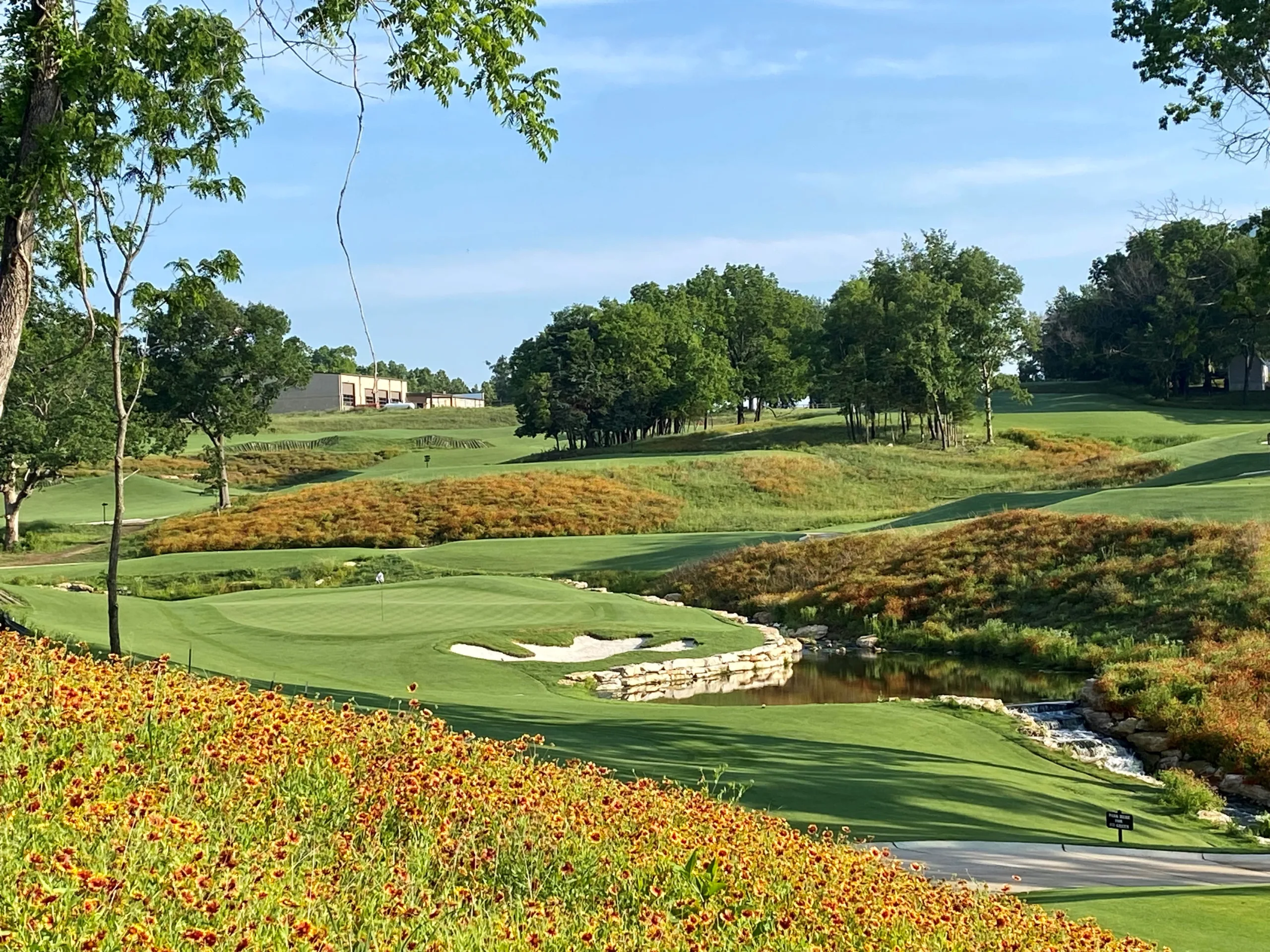
Any of these holes would be a tremendous par 3 on a great championship course. How do you strike the balance of making the course fun for beginning players but also providing thoughtful values for the more skilled player?
I don’t know anybody who didn’t want to play it a second time. I played opening day with a journalist and he couldn’t wait to play it again. It’s just one of those courses. You want to play a different tee each time, your skill set is such that that’s the fun of it. You have different clubs all the time.
Short courses are more relevant today and more are being built all the time. How do you think The Battlefield compares to some of the other courses that get publicity because they’re tied to big-branded resorts or have been designed by a “hot” architect?
I would put it up against anything in the country or out of the country. I’m not just saying it because it’s mine. I’ve played Bandon Dunes, I’ve played Sand Valley, I’ve played all these par 3s and I think they’re very well done and thought out. The Battlefield, though, is a regulation golf course. It has returning nines. It’s also designed to have a three-hole loop and a five-hole loop. You don’t have to play 18 holes, that’s the thing about being a member out there. You may come out one evening and have X amount of time, you just go play the three-hole loop. That’s the fun of golf nowadays and it makes it attractive to a broad range of people. It’s fun. It’s not intimidating at all.
We are hearing that more outings that were booking tournaments on the championship courses are now booking The Battlefield because it’s more fun and takes less time to play. Do you think that’s a trend that will hold?
I think it’s a trend that will continue and I hope it does. This is my 53rd year designing golf courses and I’ve been through the ups and downs. At one point we had 12 people in our practice, one time I had 23 courses under construction, the next year was 12, then it was eight, then it was four. It’s a different world now.
This is the kind of thing where you can find time and find opportunity. You can bring your family or your kids out there and teach them to begin on the chip and putt course, then work up to the regulation tees, then to the back tees. Then you’re not clogging up the golf course. I see it as being a huge value for time, a huge value for younger people to get into the game, which we’re always striving to continue to accomplish.
It’s just a perfect place to do a lot of things. You can spend hours on the putting course, or you can go to the driving range, then you can play six holes, or four holes. Whatever time permits. I think there’s going to be a lot more of that there.
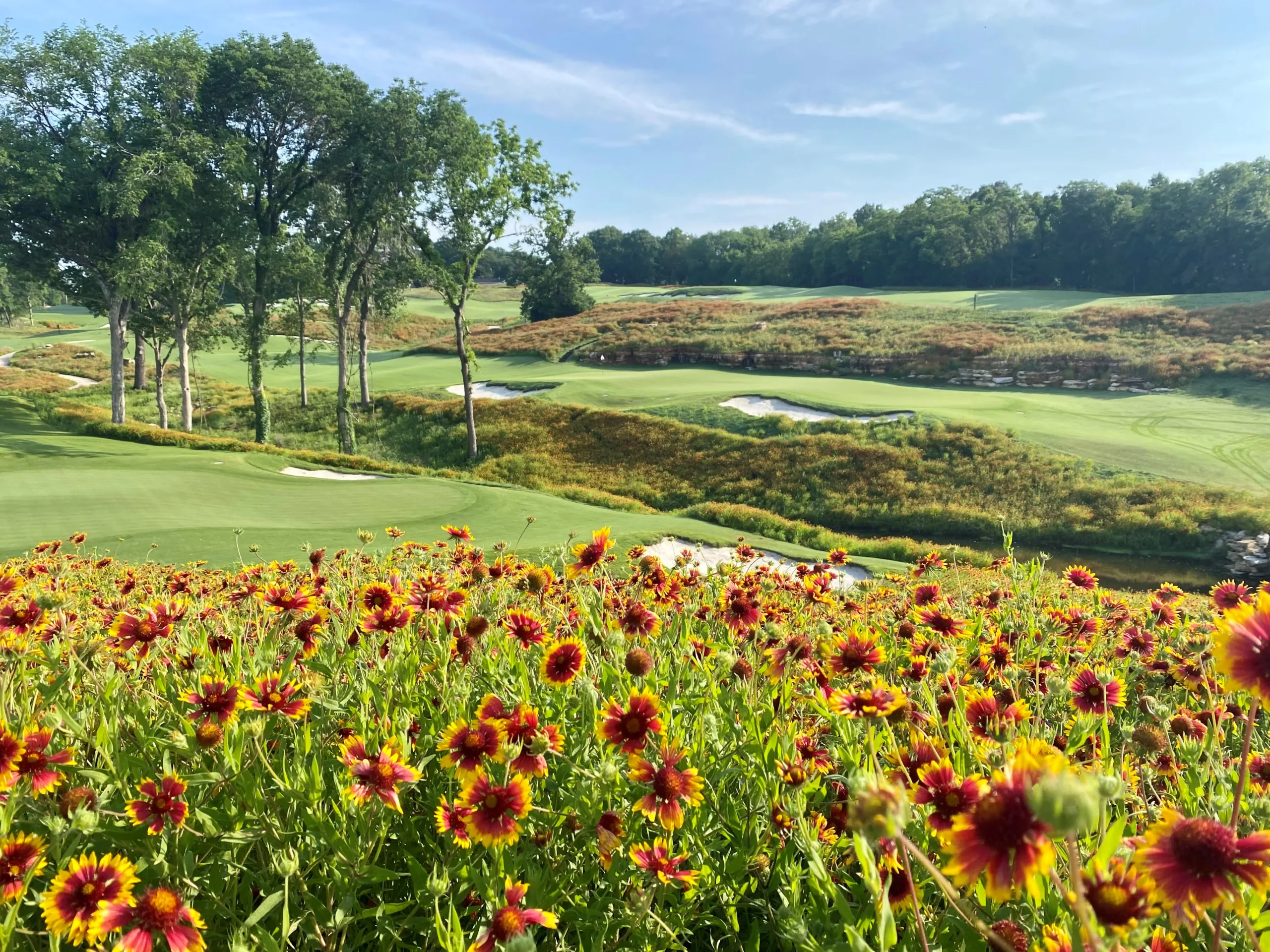
What do you hope golfers take away from the playing experience at The Battlefield?
Fortunately, I’ve had enough people call me who have come to play that were absolutely blown away. They’ve said they’ve had more fun than any golf course they’ve ever played, and they can’t wait to come back and play it again. That’s what you always wish. That and that people remember holes – ‘oh that 13th hole was a bear, this hole was great because of how you designed the green,’ etc., etc., etc. … When they remember a hole or remember that they had a great time they tell their friends.
I’ve done 22 courses in Arkansas. I have a whole group of friends who live in a village called Bella Vista. It’s not super-close, more than a couple hours away, but they make an annual pilgrimage now to go over to Shangri-La and specifically for the par 3. It’s nice that people recognize it for what it is. It’s golf and it’s the combination, to me, of some of the greatest par 3s I’ve ever done. That’s what I take out of it. You get a chance on a regulation course to do four of them, and here was a chance to do 18 of them. And the result is pretty unforgettable.

